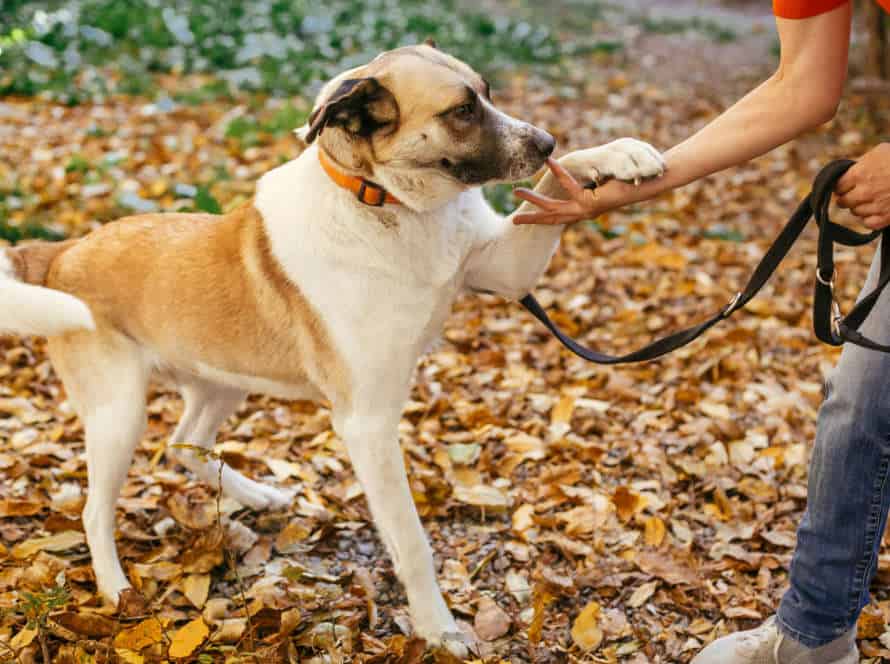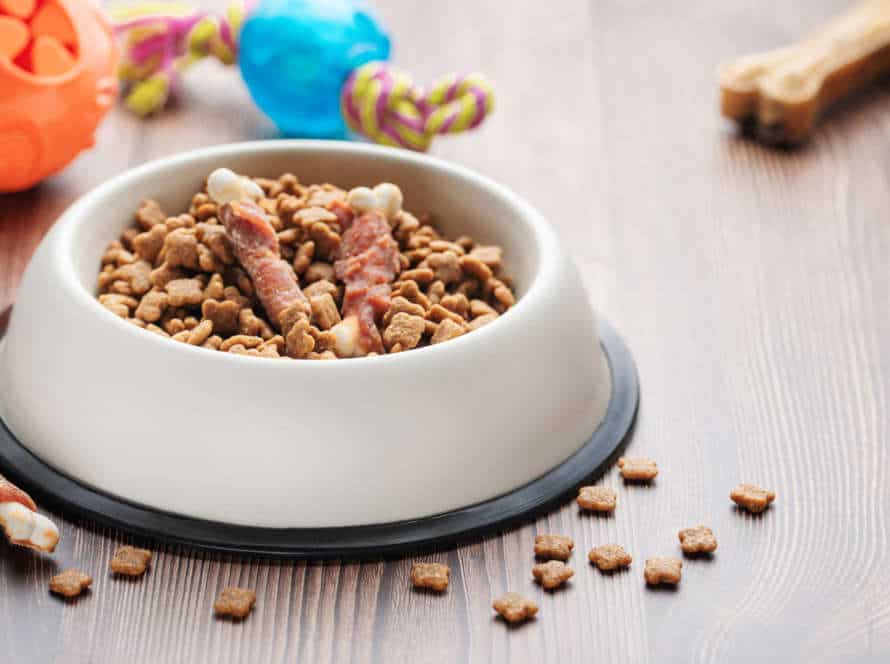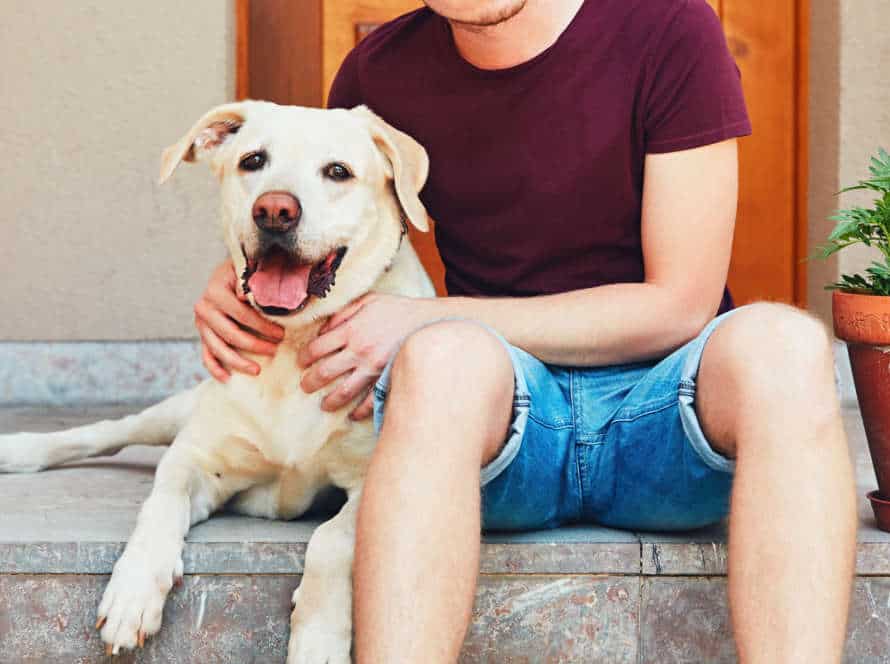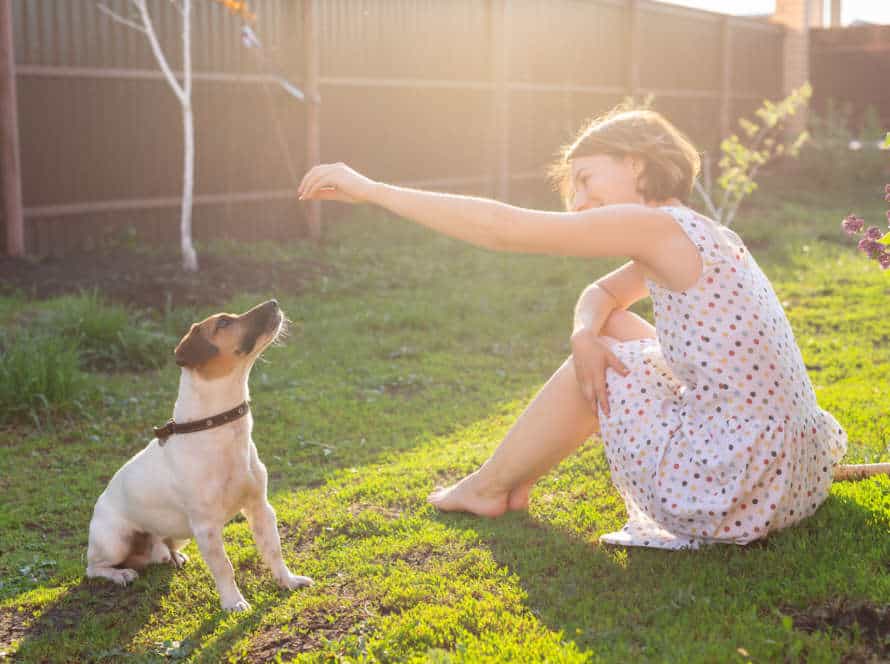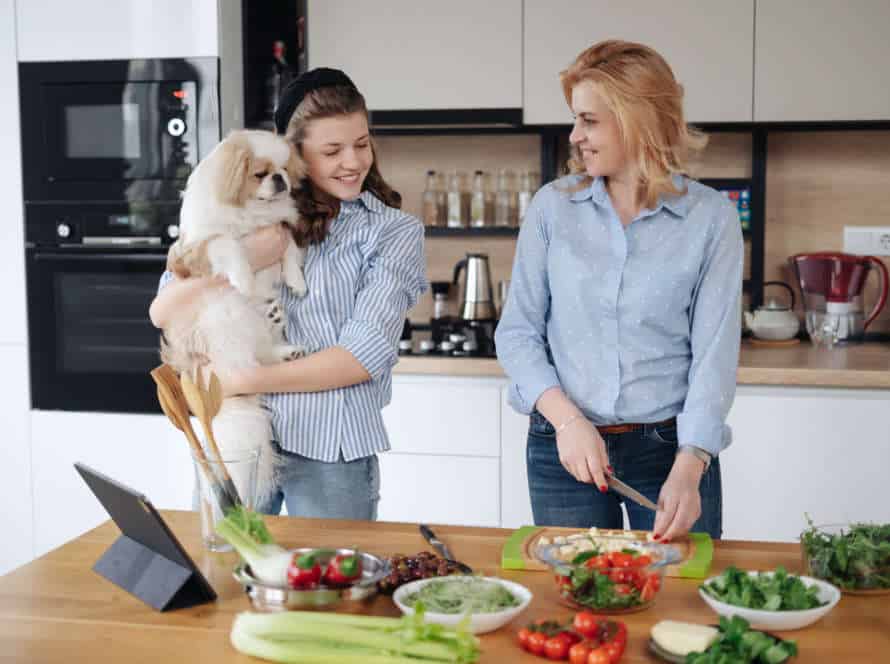Mastering Positive Reinforcement: Tips for Dog Owners
Positive reinforcement is a great way to train and reward good behaviors in dogs. Here are some tips to help you master it:
- Treats: Use bite-sized treats that your pup loves.
- Timing: Timing is key – make sure to reward your dog straight away.
- Consistency: Use the same cues and gestures each time to help your pup learn.
- Patience: Training takes time and patience. Be consistent and your pup will eventually respond to positive stimuli.
- Pro tip: Positive reinforcement is a great way to bond with your pup. Regular training sessions will strengthen the trust between you and your dog.
Understanding Positive Reinforcement
Dog training can be tough. Positive reinforcement is a great way to go. It’s effective and kind. We’ll explain what it is, how to use it right, and give tips for dog owners. Boom!
What is positive reinforcement in dog training?
Positive reinforcement is a training technique that rewards desired behaviors in dogs. This encourages effective training and good outcomes. Rewards like treats, toys, praise, and affection can reinforce commands and obedience. Positive reinforcement can help your dog to repeat the desired behavior in the future.
Here are some tips to get the best out of positive reinforcement:
- Give treats or rewards your pup loves and find motivating.
- Be consistent in using positive reinforcement when training.
- Timing is important – rewards should be given right away after the wanted behavior.
- Combine verbal cues and commands with positive reinforcement.
- Keep training sessions short and finish on a positive note.
- Remember that positive reinforcement is successful for training and building a strong connection between you and your pup.
The science behind positive reinforcement
Positive reinforcement is a powerful concept from behaviorism. It means rewarding good behavior, to make it more frequent and consistent.
To master it, here are some tips for dog owners:
- Pick the right reward. Something that your pup loves and works well.
- Timing is vital. Give the reward right after the good action.
- Consistency counts. The reward must be the same each time.
- Make it meaningful. Pick something that’s appropriate to the behavior.
By following these tips, owners and their dogs will have a better relationship. Plus, behavior will improve!
Benefits of positive reinforcement for dogs
Positive reinforcement is a great way to train your pup. Here are some of its benefits:
- Strengthening your bond with your dog – trust and respect are key.
- Increasing obedience – rewarding good behaviour will make your pup do it more.
- Improving mental and emotional wellbeing – it can reduce aggression and anxiety.
- Encouraging problem-solving skills – let your pup make choices and reward the right ones.
- Promotes learning – use this technique to teach all kinds of things.
Pro tip: For best results, be consistent with rewards and use treats or playtime to motivate your pup!
Implementing Positive Reinforcement Techniques
Positive reinforcement is a great way to train your pup! Reward them after they do something you want. The reward could be a treat, kind words, or a pat. Here’s some info on how to use positive reinforcement properly. Your dog’s behaviour will improve!
Identifying desirable behaviors in your dog
To train and manage your pup effectively, it is important to recognize desirable behaviors. Here’s what to do:
- Observe your dog’s actions and figure out which you accept.
- Reward these behaviors with treats, compliments, and play.
- Change the rewards to keep your pup thrilled.
- Stay away from punishing or negative reinforcement like shouting, hitting, or not feeding them.
- Be consistent, clear, and patient when conversing with your dog.
- If needed, reach out to a behaviorist or trainer.
Pro tip: Positive reinforcement techniques not only help you train your pup, but also build trust and strengthen the bond between you two.
Using treats and positive verbal cues as rewards
Positive reinforcement is a great way to train your pup and strengthen your bond. Treats and verbal cues can be used as rewards! Here are some tips to master it:
- Figure out what motivates your dog – their favorite treat or toy.
- Give the reward right after the desired behavior, so your pup knows what to expect.
- Use positive words like “good boy” or “good girl” with the reward.
- As your pup gets better, use the treats and verbal cues less often.
Pro Tip: Keep training sessions short and rewarding to keep your pup focused and motivated.
Incorporating clicker training for more precision
Clicker training is a great way to use positive reinforcement to train your dog. Here’s how:
- Start by connecting a sound, like a clicker or whistle, with a treat.
- Use the sound the second your pup does something good.
- Then give them the treat!
- Keep doing this until your furry friend knows the sound means a treat.
- You can use the clicker to teach more difficult behaviors too.
- Gradually reward closer and closer actions to the behavior you want.
Clicker training will help you and your pup understand each other, and motivate your pup for better training and better behaviour.
Making the Most of Positive Reinforcement
Positive reinforcement is a strong way to reinforce good behaviors in a pup or adult dog. Reward those behaviors with a treat, kind words, or even a game or toy! When you use it right, constant positive reinforcement can build a strong relationship between you and your pup, make training easier, and have a long-term effect on their behavior. Here are some tips for making the most of positive reinforcement:
Consistency in training sessions
Consistency is key when training your pup with positive reinforcement techniques. Dogs love routine and knowing what to expect. Here are some tips for staying consistent:
- Set a regular training schedule and stick to it.
- Keep the commands and cues the same.
- Keep training sessions short and on-topic.
- Consistent rewards and reward frequency.
- Don’t switch up the training techniques too often.
Staying consistent in training will make your pup an obedient companion quickly!
Reward timing and rate
Reward timing & rate are key for mastering positive reinforcement when training your dog.
Reward them immediately after exhibiting the desired behavior. This helps reinforce it & lets them know what they did right.
Be consistent in how often you reward them. If you do it each time they exhibit the behavior, they will learn & repeat it. But, if rewards are erratic, they may become confused & lose motivation.
The key to positive reinforcement is to use it consistently & appropriately to tell your dog what behavior you want. Pro Tip: Use rewards they love to keep them motivated & make the training experience positive.
Maintaining training successes long-term
Positive reinforcement is super useful for training pups. Here’s some tips to make the most of it and keep your pooch well-behaved in the long run:
- Be constant: Reward good behavior whenever you see it, and never reward bad behavior.
- Be patient: Training takes time. Keep reinforcing positive behaviors and be patient when your pup doesn’t meet your standards.
- Make it fun: Incorporate training into playtime, make it enjoyable for both of you.
- Gradually reduce rewards: When you pup has learnt the behavior, reduce rewards gradually, plus continue giving praise and affection.
- Keep challenging your pup: When your pup has got basic commands, give them new tasks to keep their brain engaged and keep reinforcing positive behaviors.
Pro Tip: Positive reinforcement is about rewarding good behavior, not punishing bad behavior. Pups trained this way are usually happier, more confident and have better behavior.
Troubleshooting Challenges with Positive Reinforcement
Positive reinforcement is a powerful approach to training your pup. But it needs consistency and finesse to use well. Here are some of the issues you could face and tips on how to fix them. Got it? Good luck!
Addressing behavior problems in dogs
Challenges with positive reinforcement techniques can be tricky, but they can be addressed. To make good behavior in your dog, start by being consistent. It is important to have clear rules that everyone follows. Next, use rewards your dog values like treats, toys, or praise. Timing is key here; give the reward right when the desired behavior appears. Lastly, steer away from punishing. This can lead to aggression and fear, and it’s not a great way to promote good behavior. Put all these strategies together and you’ll be able to master positive reinforcement with your pup!
Adapting to different dog personalities
Dogs have distinct characters that need diverse techniques for training and behaviour alteration. To make sure the positive reinforcement technique succeeds, you must adapt to various dog personalities. Here are the hints to excel at positive reinforcement approaches, adjusting to diverse dog personalities:
- Patience and gradualness are a must – learning new habits requires time and requires patience and constancy.
- Get to know the kind of your dog and his features to modify your training method.
- Make your training classes amusing and thrilling.
- Utilize positive reinforcement approaches such as treats, toys and verbal approval.
- Rewarding great behaviour is more successful than punishment for bad behaviour.
By following these simple tips, you will be able to adjust to different dog personalities and become a specialist in positive reinforcement techniques to educate and condition your furry mate properly. Consistency is the key to successful positive reinforcement training.
Avoiding common training pitfalls
Positive reinforcement is a great way to teach your pup – as long as you know what to avoid.
Here are some tips to keep in mind while using positive reinforcement to train your dog:
- Keep it consistent.
- Reward or praise your doggo straight away.
- Set goals based on breed and age.
- Training takes time and patience.
- Don’t rely on treats alone. Use praise, petting and playtime too.
By knowing what to look out for, you can use positive reinforcement to build a special bond with your pup.
Enhancing Your Dog’s Training with Positive Reinforcement
Positive reinforcement is a great way to train dogs and get better results. Reward your pup when they do something good, and they’re more likely to keep doing it. Knowing the different types of positive reinforcement can help you use effective training methods that will make your pup’s behaviour better and make them more fun to be around. Here are some tips for using positive reinforcement in dog training:
Using positive reinforcement to strengthen your bond with your dog
Positive reinforcement is a great way to create a strong bond with your pup while teaching them. Here are some tips to use it:
- Treats: Offer your pup their favorite snacks when they follow commands or show good behavior.
- Praise and love: Dogs love praise and affection, so give them lots when they do something right.
- Be consistent: Make sure you give the same rewards and instructions to avoid confusing your pup.
- Timing: Give the treat immediately after they obey your command to reinforce the desired behavior.
Positive reinforcement not only helps with training but also strengthens the bond between you and your pup. Pro tip: Keep training sessions short and enjoyable for your pup to stay motivated.
Incorporating positive reinforcement into everyday interactions with your dog
Positive reinforcement can really improve your dog’s obedience! It’s a reward-based method that promotes desirable behaviour and discourages unwanted ones. Here are some tips to get you started:
- Give treats, compliments or cuddles straight away when your pooch does something well.
- Ignore bad behaviour or redirect it without punishing them.
- Link your commands with good outcomes.
- Be patient and persistent, and don’t use negative reinforcement.
With practice, positive reinforcement will soon become a great way to bond and train your doggy friend!
Advancing your dog’s training with positive reinforcement challenges.
Positive reinforcement is the top way to teach your pup. Giving them challenges to learn new skills is a great way to boost obedience training. Here are a few tips for using positive reinforcement:
- Start off with simple commands like sit, stay and come.
- Give treats and praise to them for progress.
- Gradually make the challenges harder.
- Train regularly and be consistent with how you’re teaching.
- End each session with praise and playtime.
Pro tip: Dogs adore positive reinforcement. So be sure to give them treats and praise for every success. With patience and time, you and your pup can turn training into a positive experience.
Frequently Asked Questions
Q: What is positive reinforcement?
A: Positive reinforcement is a training technique where your dog is rewarded for good behavior, rather than being punished for bad behavior.
Q: Why is positive reinforcement important?
A: Positive reinforcement helps build a strong bond between you and your dog, and it is a more effective and humane way to train your dog.
Q: What are some examples of positive reinforcement?
A: Examples of positive reinforcement include giving your dog treats, praising your dog, and giving your dog attention and affection.
Q: How can I use positive reinforcement to train my dog?
A: To use positive reinforcement in dog training, reward your dog with treats, praise, or attention when they exhibit good behavior. Ignore bad behavior rather than punishing your dog.
Q: Can positive reinforcement be used to train any breed of dog?
A: Yes, positive reinforcement can be used to train any breed of dog. However, different breeds may respond differently to certain rewards, so it’s important to find out what motivates your individual dog.
Q: Can positive reinforcement be used to correct bad behavior?
A: Yes, positive reinforcement can be used to correct bad behavior. By rewarding good behavior and ignoring bad behavior, you can help your dog learn what is expected of them.


